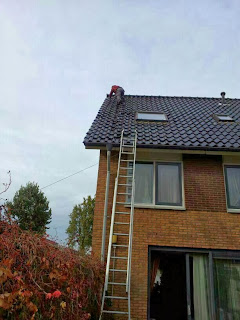Last sunday I assembled the 1.2 GHz amplifier which is a design of PA0VRE from 2002.
It contains two SHF transistors: A BFQ68 and a BFQ136. The amplifier is able to generate 5 Watts RF power at 1.2 GHz with 200 mW input.
Assembling the kit was a delicate job. Some very small SMDs (2p2) had to find their way to the pcb and the whole circuit is mounted on a heatsink.
All details are here: http://www.van-rees.nl/23pa/versieNL.PDF
Anyway, after building the first test on the bench were promising.
The 23 cm amplifier finished
This morning I connected the amplifier to the ATV baseband circuit, connected the biquad antenna to the amp and pointed the antenna to the local ATV repeater and switched the power on.
A nice steady ATV signal at 10 GHz from PI6ZTM came back for me:
My 1255 MHz ATV signal (LH upper corner) arrived at the PI6ZTM repeater
Steady ATV FM signal
I am curious what is possible with the 1.2 GHz Watts available now. Maybe, now it is also time to give my ATV antenna a permanent place on the roof.
Thanks Erwin !














